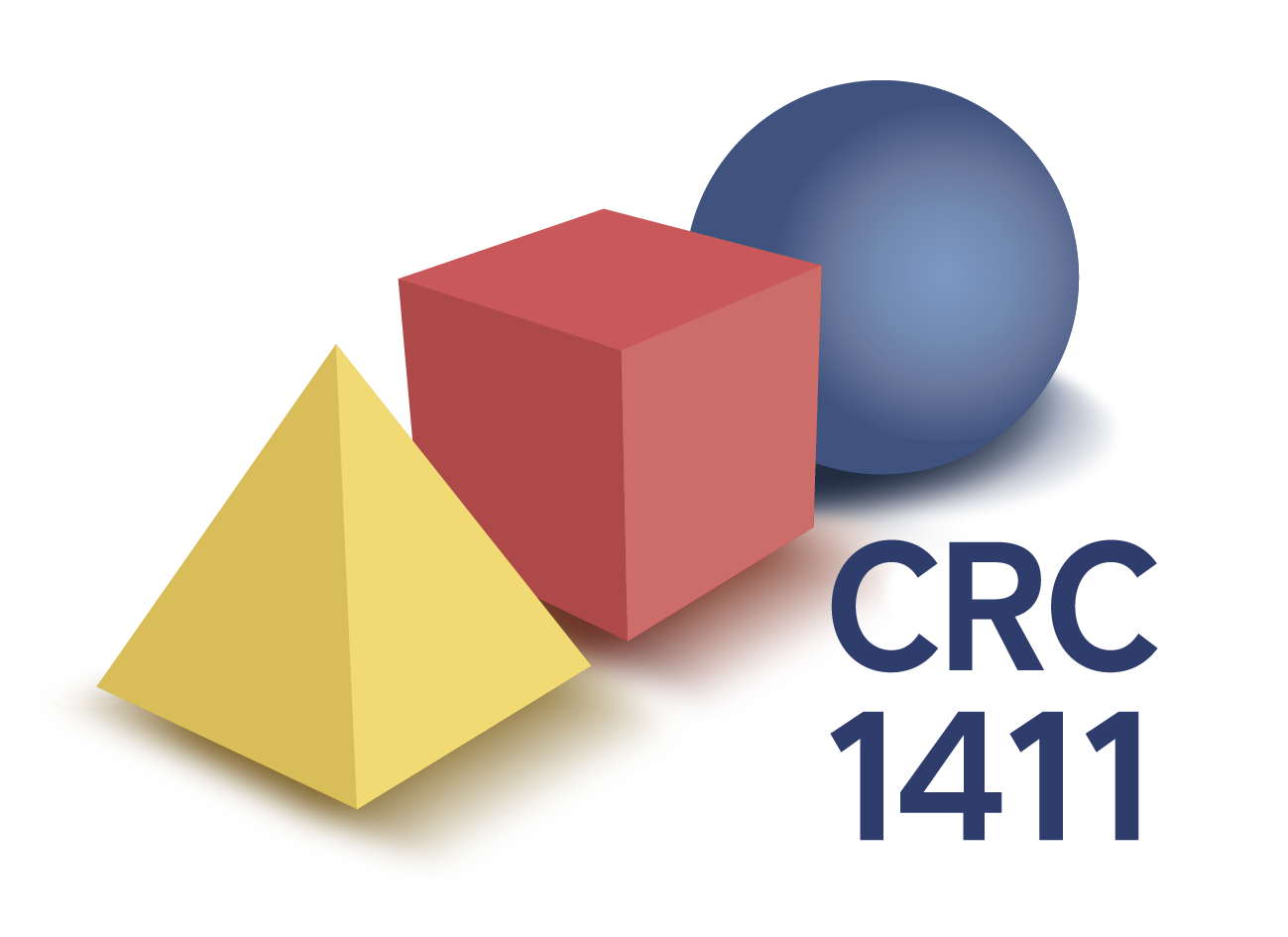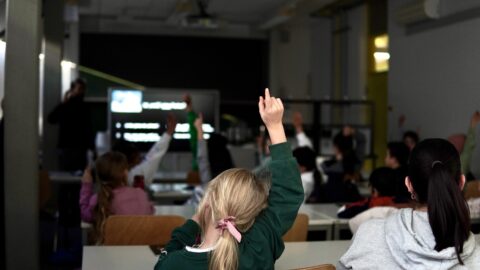CRC1411 at the Erlangen KinderUni
On 5 November 2025, 20 children aged 7 to 11 from the FAU KinderUni holiday programme visited the Chair of Micro- and Nanostructure Research (IMN) to discover how nature creates brilliant colours in flora and fauna.
The visit began with a short, child-friendly introduction to structural colour and basic physical colour phenomena — topics that are central to the Collaborative Research Centre 1411. The children learned that different microscopes operate on very different length scales – and that electron microscopes are needed to reveal the fine structures responsible for the shimmering colours of butterfly wings.
In small groups, the young visitors then rotated between the preparation laboratory and the scanning electron microscope (SEM). In the preparation lab, they gained their first hands-on experience with a stereo microscope, examining the wings of a Morpho butterfly (Morpho didius) and a green hairstreak (Callophrys rubi). Using light and electron microscopy images, differences in the wing-scale structures were explained and linked to the origin of structural colour. A simple experiment with ethanol on a Morpho wing showed how changing the surrounding medium shifts the reflected wavelength – the wing temporarily appeared green.
The children then created their own iridescent layers by dropping polystyrene particles in an aqueous solution onto glass slides and drying them on a hot plate. As the particles self-organised into ordered layers, the samples began to shimmer in different colours depending on particle size, providing a vivid demonstration of how periodic structures can generate colour.
At the SEM, the focus shifted to imaging very fine details with electrons. After examining the stars and globe on a 1-cent coin – structures barely visible to the naked eye – each child volunteered a hair, whose thickness (about 50–100 μm) was measured and compared with the ~1600 μm thickness of the coin. Finally, cross-sections of a Morpho butterfly wing and a jay feather were imaged, making the colour-producing nanostructures directly visible.
The visit concluded with a small “sweet surprise” in the form of iridescent chocolate – a fitting end to a day full of colourful impressions from the micro- and nanoworld.
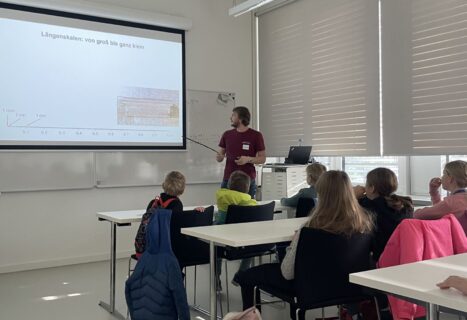 |
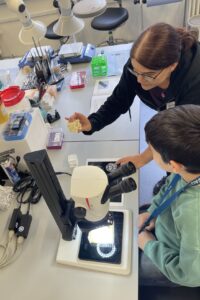 |
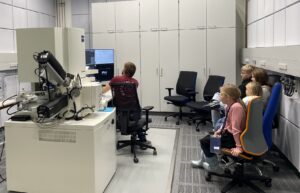 |
On November 6th, 20 kids took part in an outreach activity organized by the IPT and CSC. The aim was to give them an idea of how mathematicians and engineers work together to predict and carry out the synthesis of nanoparticles, a central topic within CRC1411.
During the event, the participants interacted with researchers Patricia Schmul, Nabi Traoré, and PI Lukas Pflug. They learned about the daily work of mathematicians and engineers at the university and explored the scale of nanoparticles by comparing them to everyday objects. The group was also introduced to basic concepts of light and color and discussed how objects absorb light and how this affects the color we see.
With guidance from the researchers, the kids calculated how much a particle grows during synthesis and used a simulation tool developed by Dr. Lukas Pflug to understand the relationship between particle size and color. Afterwards, they synthesized nanoparticles themselves using a reactor designed by Nabi Traoré, allowing them to compare their experimental results with their predictions.
We hope the activity provided the participants with a useful introduction to scientific thinking and encouraged their interest in research.
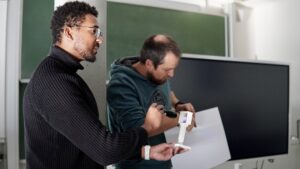 |
 |
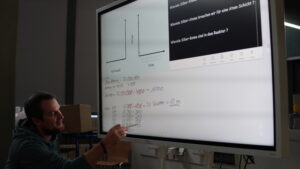 |
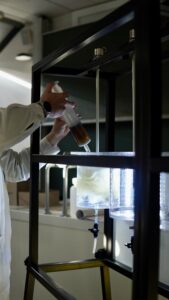 |
